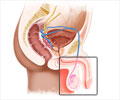Poor sense of smell can predict the risk of Parkinson’s disease 10 years prior to the actual diagnosis.
Highlights:
- Scratch and sniff test can help predict the risk of Parkinson’s disease.
- People with poor sense of smell were nearly five times more likely to develop Parkinson’s disease than people with a good sense of smell.
- The smell test can be used as a screening tool for Parkinson’s after extensive research.
"One of the key differences in our study was we followed older white and black participants for an average of about 10 years, much longer than any other previous study," Chen said.
Smell Test to Check for Parkinson’s
For the study, 1,510 white and 952 black participants with an average age of 75 were recruited. People were asked to smell 12 common odors including cinnamon, lemon, gasoline, soap and onion, and then select the correct answer from four choices.Participants were divided into three groups - poor sense of smell, medium and good based on their scores. The participants were monitored for a decade through clinical visits and phone interviews.
Ethnicity Difference in Smell Test
During the study period, 42 people developed Parkinson’s which includes 30 white people and 12 black people."Previous studies have shown that black people are more likely to have a poor sense of smell than whites and yet may be less likely to develop Parkinson’s disease," said Chen, who is part of MSU’s Global Impact Initiative.
The relationship between smell and Parkinson’s risk in black participants were not as strong as in the whites. There was no statistical link between poor sense of smell and Parkinson’s disease in blacks but it could also be due to the small sample size.
Poor Sense of Smell Indicates Risk of Parkinson’s
The findings show that people with poor sense of smell were nearly five times more likely to develop the disease than people with a good sense of smell.Out of the participants, 764 people were categorized to have a poor sense of smell,; among which 26 people developed the disease.
Only 7 out of the 835 people whose sense of smell was good developed the disease and in the 863 people whose sense of smell was categorized as medium only 9 of them developed the disease.
The results stayed the same after adjusting for other factors that could affect risk including smoking, coffee intake and history of head injury. The association was strong upto 6 years and after that, the link remained.
"It’s important to note that not everyone with low scores on the smell test will develop Parkinson’s disease," Chen said. "More research is needed before the smell test can be used as a screening tool for Parkinson’s, but we are definitely on to something and our goal now is to better characterize populations that are at higher risk for the disease and to identify other factors involved."
Recent Evidence on Risk Factors of Parkinson’s Disease
The diagnosis of PD involves neurological examination and neurological history. Symptoms of tremors, stiffness of limbs, pattern of walking, and quickness in regaining balance might indicate PD. Recent evidence also shows that some risk factors might indicate the onset of PD.- Vagus Nerve: Parkinson’s disease often have gastrointestinal problems such as constipation, that can start decades before they develop the disease. The vagus nerve is the 10th cranial nerve that has both sensory and motor functions might be the reason for GI problems. people who had undergone resection surgery or the removal of the main trunk or branches of the vagus nerve had a 40% reduced risk of PD.
- Low Fat Dairy: Frequent consumption of dairy products was associated with a modest increased risk of Parkinson’s disease in men and women. Three servings of low-fat dairy a day had a 34 percent greater chance of developing Parkinson’s and skim and low-fat milk consumption increased the risk by 39%.
- Gut Microbes: The bacterial community in the gut of patients with Parkinson’s differs from that of healthy people, even when they are at an early stage of the disease.
- Sleep Disorder: Idiopathic Rapid-Eye-Movement Sleep Behaviour Disorder (IRBD) increases the risk of PD. Altered gut microbes changed the sleep pattern and showed an association with PD.
- Dreaming dysfunctions such as REM sleep behavior disorder may be an early warning sign for diseases that may appear some fifteen years later in life.
Reference:
- Bojing Liu et al. Vagotomy and Parkinson disease. Neurology; (2017) doi.org/10.1212/WNL.0000000000003961.
- Katherine C. Hughes et al., Does consuming low-fat dairy increase the risk of Parkinson’s disease?, Neurology (2017).













